
FlexApp Review - AI Mobile App Builder That Actually Works
We've tested FlexApp, an AI-powered mobile app builder that lets you create native mobile apps from simple prompts with Supabase integration and real-time preview
Welcome to this FlexApp review 😊!
Building mobile apps has traditionally been a complex, time-consuming process requiring specialized knowledge of multiple programming languages and frameworks. While no-code platforms have made app development more accessible, most still require significant time investment and technical understanding to create something truly functional.
That's where FlexApp enters the scene with a bold promise: build complete mobile apps from nothing more than a simple text prompt. Think of it as the "Bolt for mobile apps" - an AI-powered platform that transforms your ideas into working React Native applications in minutes, not months.
What makes FlexApp particularly interesting isn't just its AI-driven approach, but its thoughtful integration with modern development tools. With built-in Supabase support for backend functionality, real-time preview through Expo Go, and a visual inspector for fine-tuning, it seems designed for both rapid prototyping and serious app development.
In this review, we'll try 2 types of apps: a static one without a database, and a full stack one with Supabase integration 👀.
Let's go!
Step 1: Getting Started
FlexApp greets you with a bold statement: "Build Mobile Apps With AI, Not Code." The interface is clean and modern, with a dark theme that immediately feels professional. Registration is straightforward - nothing fancy, just the essentials to get you started.

Once logged in, the dashboard is simple. You have two main options: describe your app idea in detail, or start with templates. The left sidebar includes essential links like Discord community, pricing, settings, and documentation - everything you need is easily accessible.
For my first test, I decided to challenge FlexApp with a gaming classic. My prompt? "A simple tetris game" - deliberately basic to see what the AI could build from minimal instructions 😎.
Step 2: Project Configuration
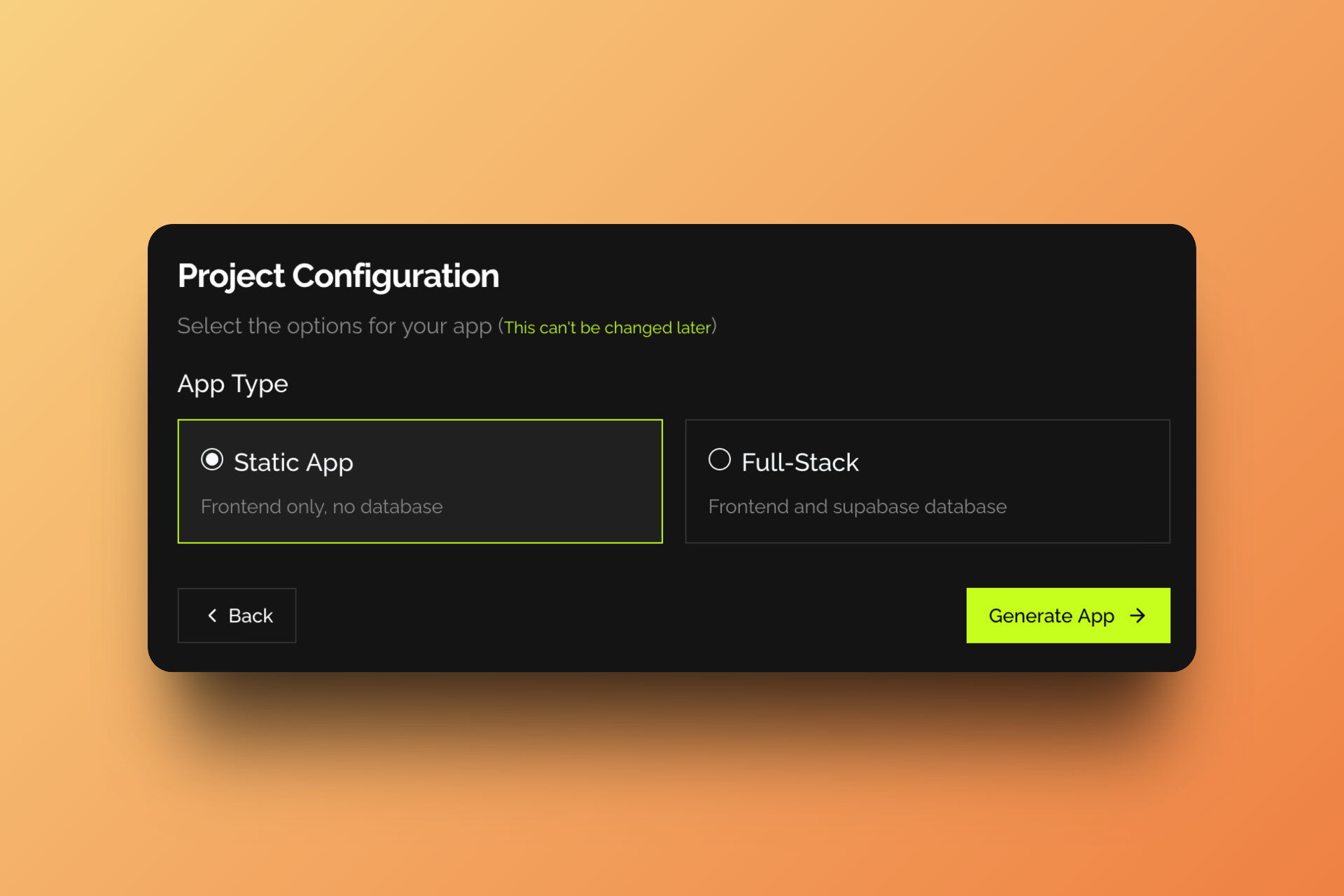
Before generating the app, FlexApp asks you to choose your project type:
- Static App: Frontend only, no database
- Full-Stack: Frontend and Supabase database integration
For a Tetris game, I selected "Static App" since it doesn't need backend functionality. The interface clearly explains what each option includes, with a helpful warning that these settings can't be changed later - so choose wisely!
There's also a global prompt settings feature where you can set consistent preferences for how the AI should approach your projects - useful for maintaining coding standards across multiple apps.
Step 3: The Magic Happens - First Generation
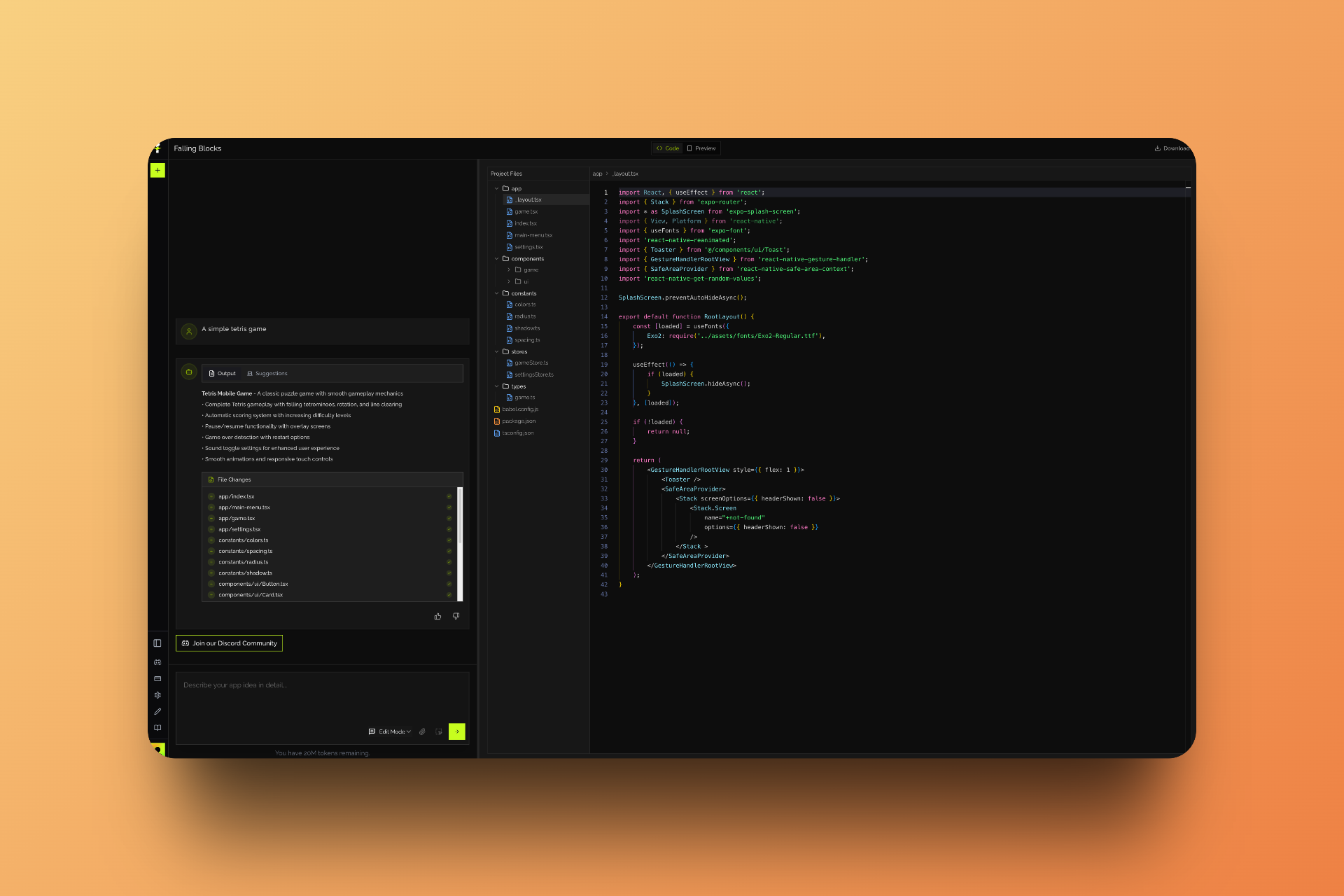
Within seconds, FlexApp generated a complete Tetris game! The interface splits into several key sections:
- Left sidebar: File explorer showing the complete app structure
- Center: Code editor with syntax highlighting
- Output panel: AI's detailed explanation of what it built
Let's not beat around the bush: the AI built a fully functional Tetris game.
- Complete gameplay mechanics
- Automatic scoring system with increasing difficulty levels
- Pause/resume functionality with overlay screens
- Sound toggle settings (though no actual sound 😂)
- Smooth animations and responsive touch controls
Incredibly impressive!
Step 4: Testing on Mobile - The Real Magic
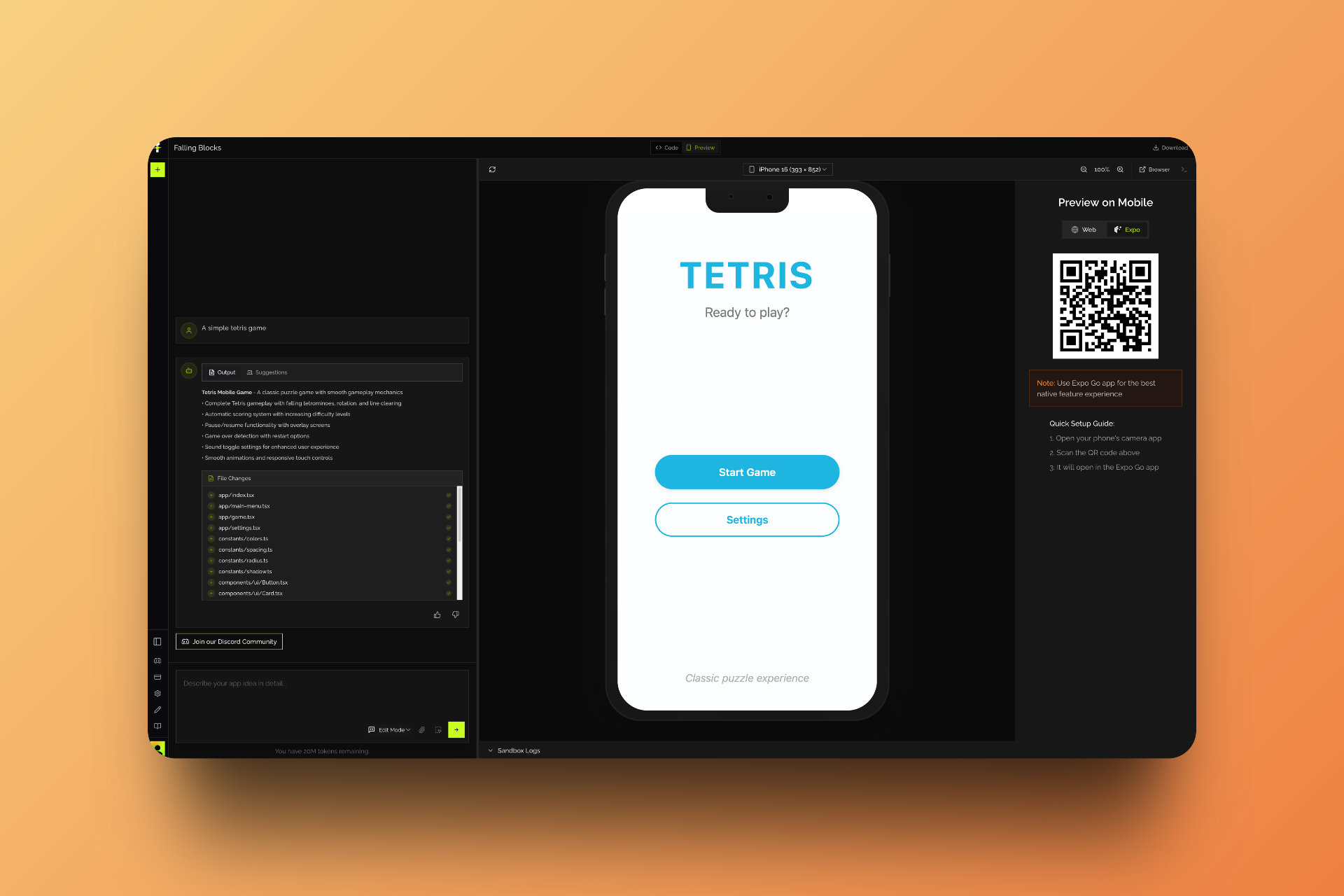
The mobile preview section shows your app running in real-time, complete with an iPhone frame for context. A really nice feature is the QR code on the right - scan it with your phone to magically open the app in the Expo Go app (also works in the browser).
No complicated deployment processes, no waiting for builds - your app is immediately testable on real hardware, your phone. Pretty cool!
The main menu looks great, the buttons works... Let's see how the game looks.
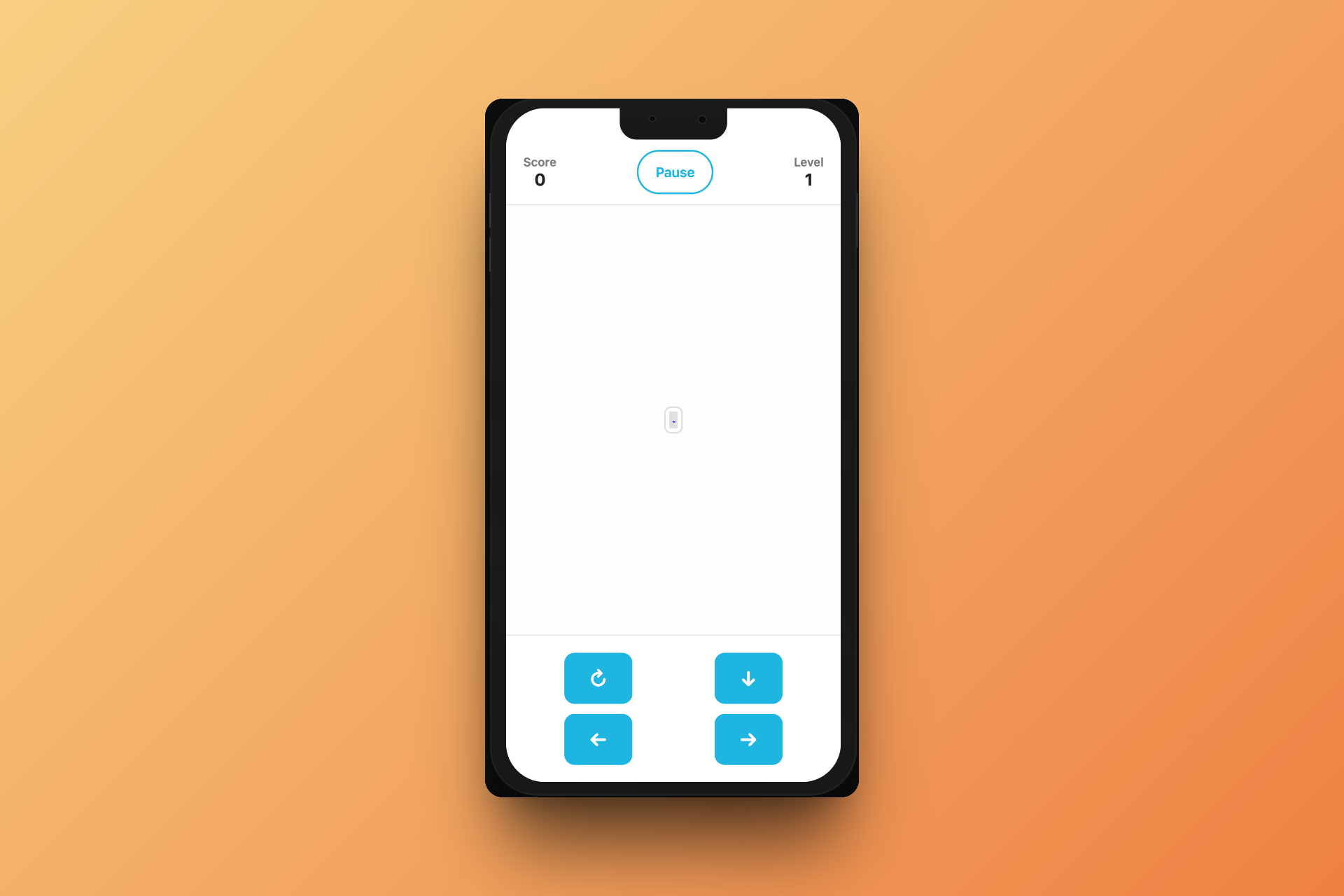
Whoops 😂! Almost there!
The game area was way too small, I couldn't even be sure the game was working. But perfect: let's see how the AI handles this.
Step 5: Iterative Improvements Through Chat
FlexApp's edition mode (cause there's also a chat mode, like Cursor) lets you make changes through natural language instead of diving into code.
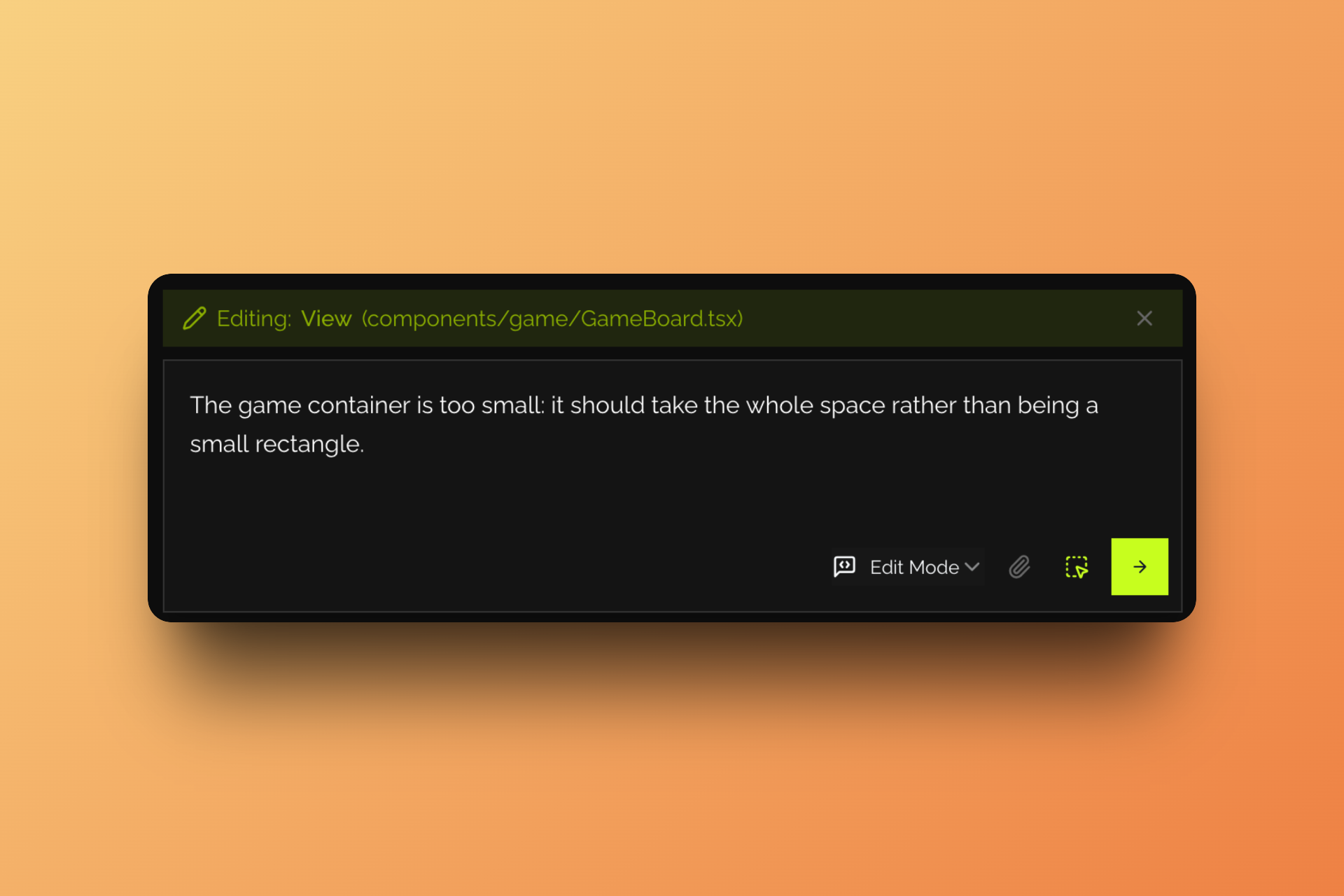
My first improvement prompt: "The game container is too small: it should take the whole space rather than being a small rectangle."
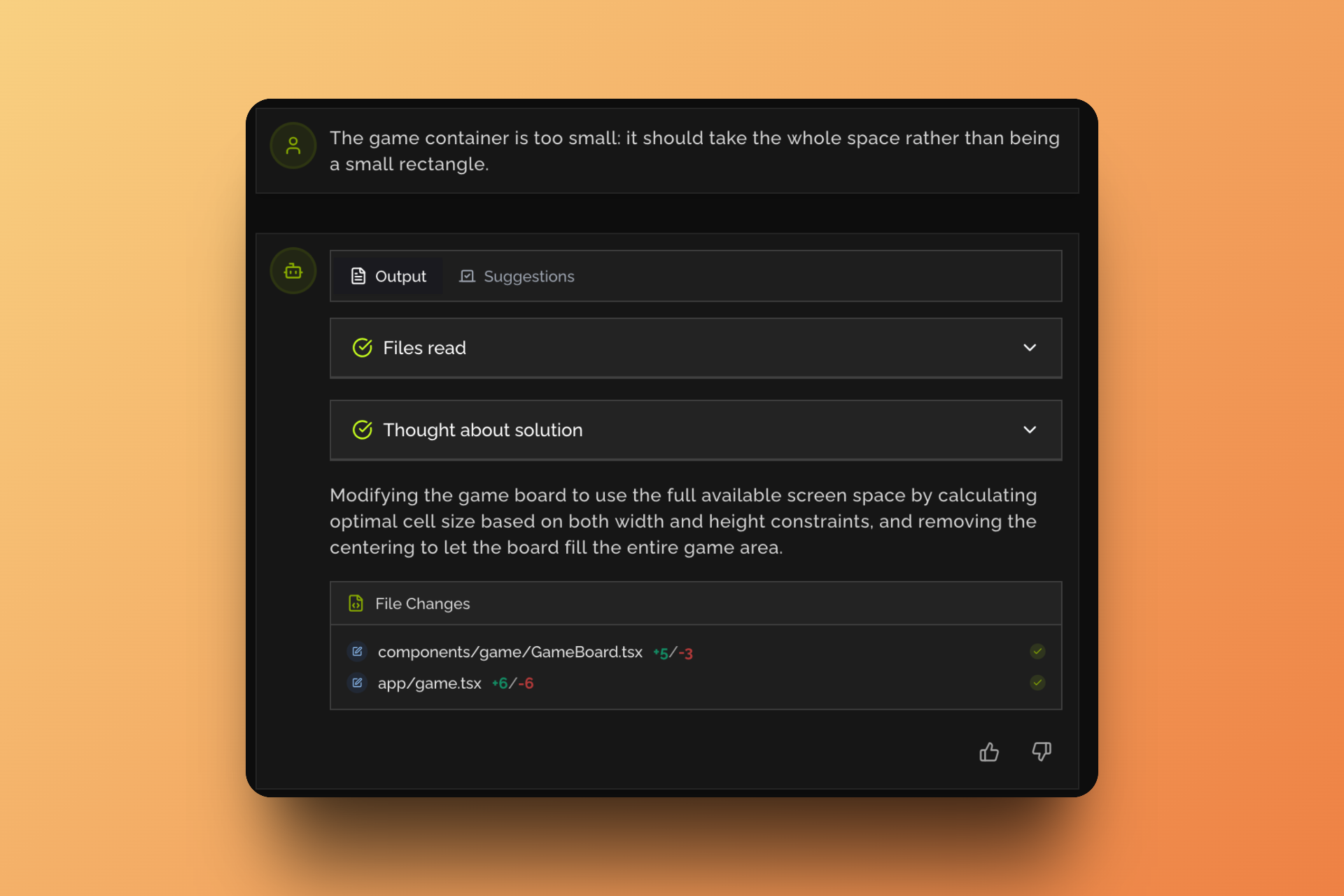
I find the design of the AI's responses is quite good, showing:
- Files read: What code it analyzed
- Thought about solution: Its reasoning process
- File Changes: Exactly what it modified
There's also a "suggestion" tab, containing a list of features the AI thinks you might want to add 😍!
I'll be honest - it took me 3 additional prompts to get the grid sizing exactly right. The AI understood my request immediately, but fine-tuning the proportions required a few iterations. Not bad though, but it means one thing: while you can generate a basic game from ONE prompt (or use a template), you'll need to iterate a few times to get it exactly right.
During testing, I also discovered that the "Quit to Menu" button in the pause screen wasn't working. One simple prompt was all it took to fix this functionality - the AI immediately identified the navigation issue and corrected it.
The Final Result
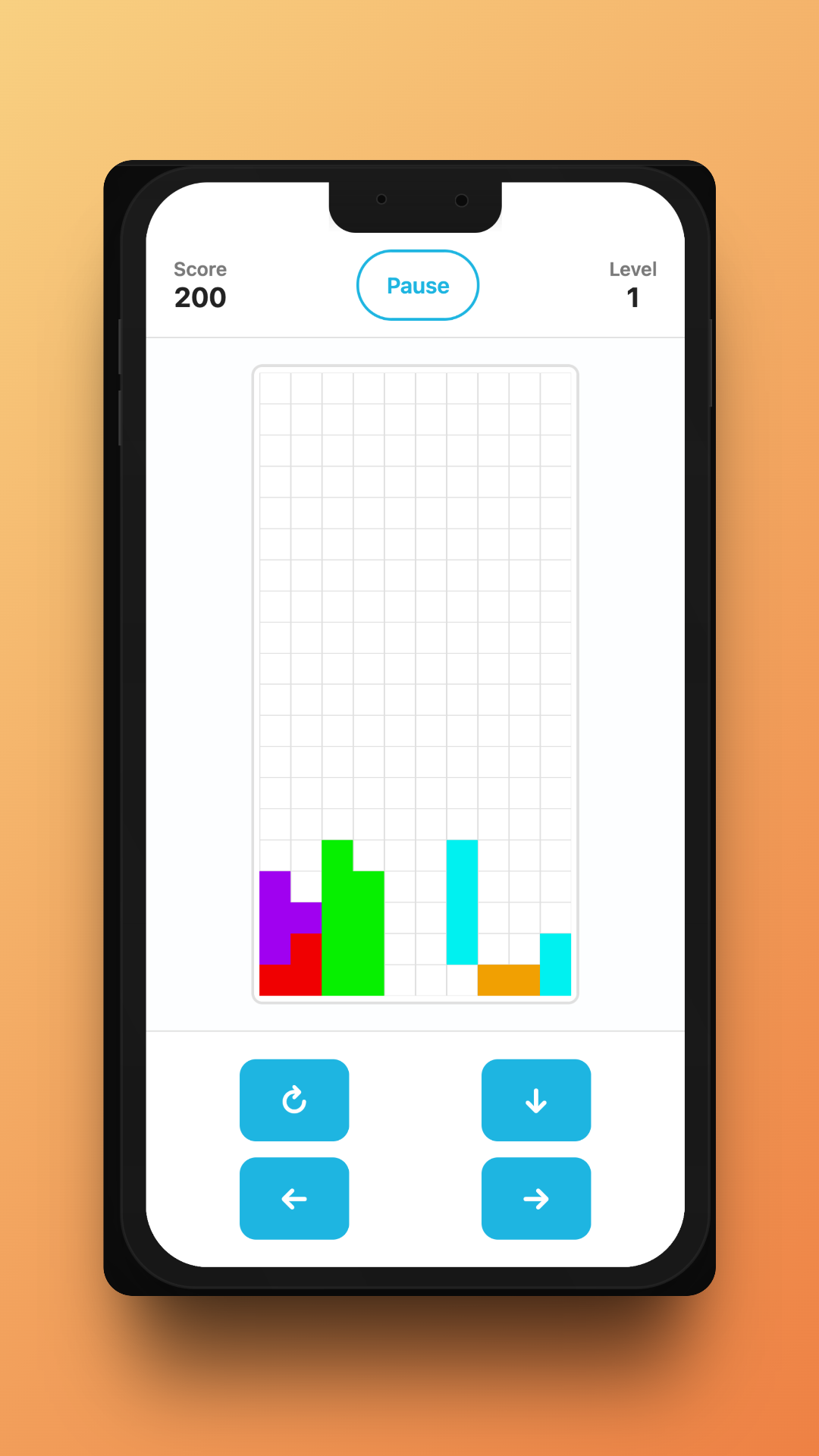
After 5 total prompts (1 initial + 3 for sizing + 1 for the menu bug), I had a polished, fully-working mobile Tetris game that:
- Uses the full screen real estate effectively
- Has responsive, intuitive touch controls
- Includes pause/resume functionality that actually works
- Tracks score and level progression
- Provides a smooth, professional gaming experience
Other features and a few thoughts
Throughout this process, I discovered FlexApp's feature set:
- Multiple Preview Modes: View your app on iPhone, web, or scan the QR code for real device testing
- Visual Inspector: Click directly on components in the preview to select and edit them
- Chat Mode vs Build Mode: Switch seamlessly between conversational editing and direct code manipulation
- Integrated Terminal: Full access to logs and build processes
- One-Click Download: Export your complete React Native project instantly
The UX design is thoughtful, and I literrally never encountered any bug or issue. As you may know, we also provide a "private review" for every product we test, and this is one of the first times the "Bug and issues" section was empty 🙌🏻
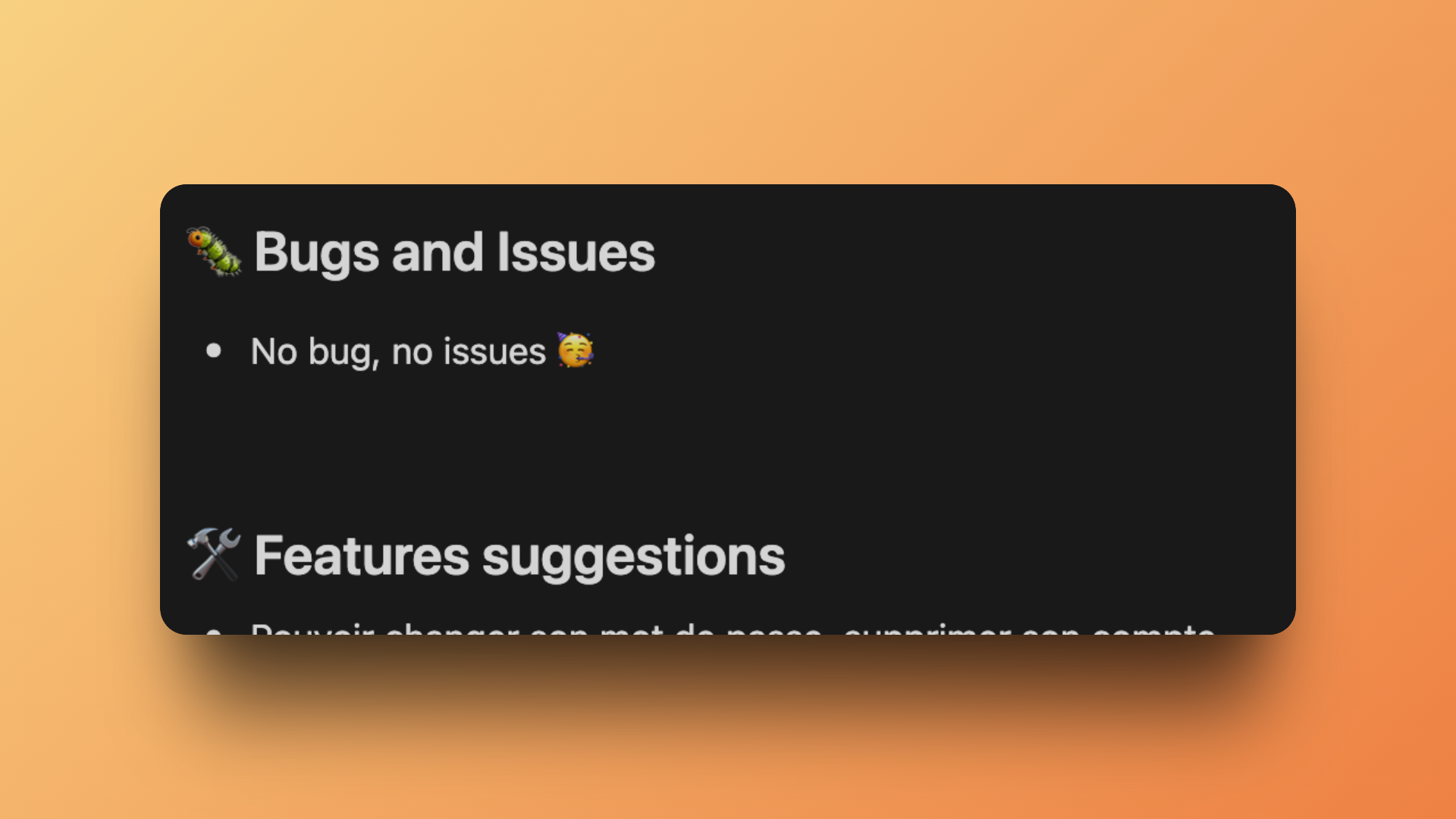
Finally, I also wanted to highlight something we didn't cover in this review, but that is a really game changer: the templates.
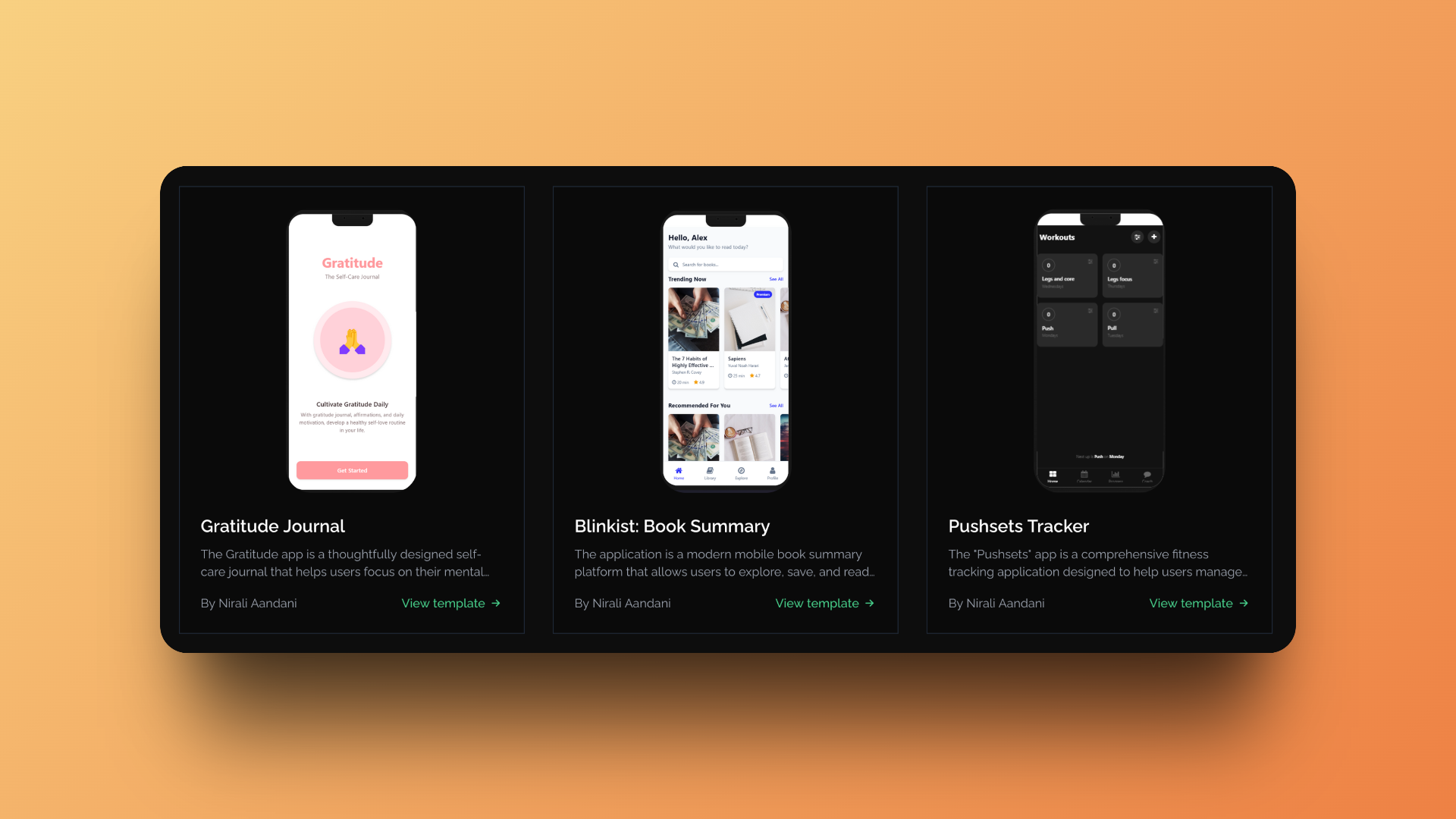
When creating a new project, you can choose between a template or a blank project. There are currently 3 templates available, and I'm sure more will be added in the future!
Conclusion
That's the end of this FlexApp review! After this hands-on experience building a Tetris game, I'm giving FlexApp a 90/100 score. Here's why:
The prototype generated from a single, basic prompt was incredibly sophisticated. We're talking about a fully functional game with complete gameplay mechanics, score tracking, pause functionality, and mobile-optimized controls - features I didn't even explicitly request!
The iterative improvement process through natural language is what makes FlexApp special. You don't need to understand React Native code to make meaningful improvements to your app. The AI responses are contextual, precise, and the explanations help you understand what's being changed and why.
With just 5 prompts total, I went from idea to polished mobile game. That's genuinely impressive for an AI mobile app builder.
If you want to vibe-code a mobile app, FlexApp is the way to go 🔥!
PS: here's our game's link if you wanna try it.
In addition to this article, this product has also received a private review from our team, divided into 4 categories. We don't share the content, but here are the numbers:

Bugs
& Issues

Feature Suggestions

UX/UI Improvements

Marketing Opportunities
PageAI Review - The AI Website Generator Built for Production in 2025
We've tested PageAI.pro, an AI website generator that creates production-ready websites - from landing pages to full applications
Chik Review - The Anti-Bloat Task Manager for Freelancers in 2025
We've tested Chik, the simplified task manager designed specifically for freelancers to collaborate with clients without the bloat of traditional project management tools